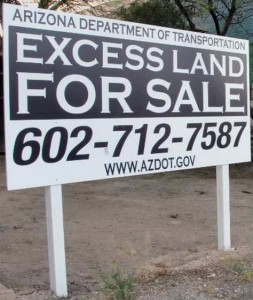Taking everything from the prior five posts of this series, we see that there can be a huge difference in perception between what can and cannot be built on marina land. The problem comes when assessors view a marina site as highly buildable when in reality the marina owner knows it is not due to tidal wetlands, non-tidal wetlands, unfavorable soils, flood zone classification, state and local government regulations, zoning, local governmental attitude toward development, etc.
The initial discussion of excess and surplus land comes into play here. Given the issues outlined in this series, the amount of excess land at marina sites is much less than most owners and assessors believe. The difference is primarily marketability. It isn’t that a marina site could not be subdivided or be developed at all – it’s that the cost of doing so is so high, the time frame for obtaining all necessary studies, permits and approvals is so long and the potential yield is so low that who would bother? If the lot is heavily treed or has lots of common reed along its water frontage, it does not really qualify as water view any more. The site is not marketable as excess land, so it is classified as surplus land.
 So what is surplus marina land worth? Certainly the wetlands portions, regardless of whether it is tidal or non-tidal, have no marketability and therefore nothing more than the most minimal value allocation. There are no comparables – only the State and certain charities have an interest in buying and preserving wetlands.
So what is surplus marina land worth? Certainly the wetlands portions, regardless of whether it is tidal or non-tidal, have no marketability and therefore nothing more than the most minimal value allocation. There are no comparables – only the State and certain charities have an interest in buying and preserving wetlands.
That portion of surplus land that is not wetlands is worth more, but remember all the handicaps listed above. We would not use buildable lots as a comparison because the surplus land in its raw state has not been made a buildable lot. We would start by performing a sales comparison on a per acre basis and then making substantial downward adjustments to reflect the problems associated above. The result would be a market value per acre well below what any non-wetlands acreage sale has sold for, but more than a value we assign to wetlands. This, of course, can be very different from the assessed value put on the site, hence the need for a tax appeal.
As you can see, the due diligence necessary to come to these conclusions is tremendous. However, getting it wrong can overstate value, not infrequently by millions of dollars! This comes with the job of being an appraiser, so this is one reason why appraisal fees for vacant land should be higher than improved sites.
If you are a marina owner with lots of extra land, what is it assessed for? How much per year do you spend on the taxes? If it’s assessed like it’s a buildable property and you know it’s not, file that tax appeal. Better yet, consider getting it subdivided and donate it to the municipality or state and get a tax write-off. Maybe they’ll even name a park in your honor!

